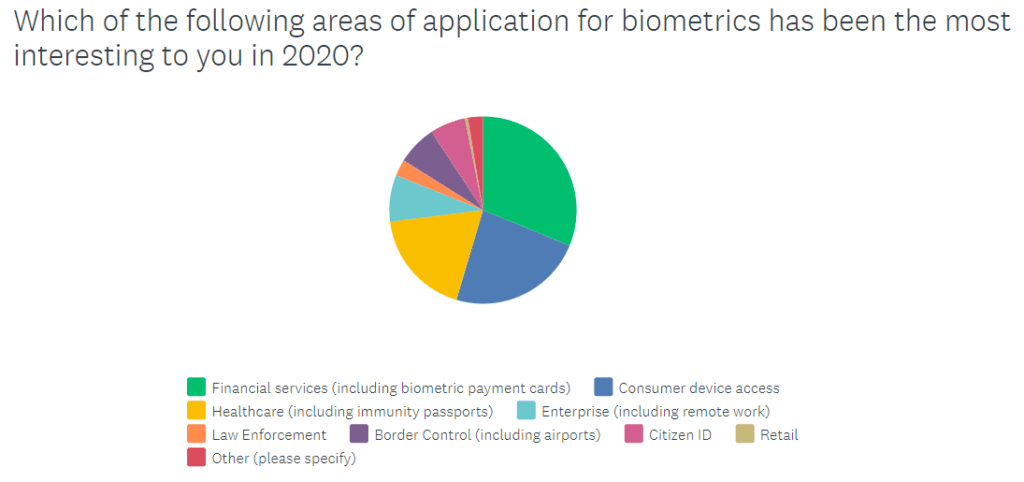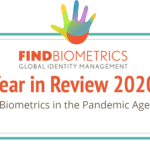The FindBiometrics Year in Review survey closed earlier this month – after collecting over 900 responses – and we’ve started to unpack the results with in-depth analysis. Last week, we focused on some of the big and somewhat surprising impacts of the COVID-19 pandemic, which shook up the top rankings of which biometric modalities readers found most exciting and made respondents wary of shared fingerprint readers.
Now, we’re going to dig into some results that show perhaps a bit more consistency with respect to ongoing, multi-year trends. When asked which application area was most exciting in 2020, readers once again voted financial services to the top. It took 31.2 percent of the vote, compared to the 30 percent share it had in our 2019 survey, and its 26 percent in 2018.

The upward trajectory can largely be attributed to the ongoing and intense wave of digitization that continues to sweep the financial services world. Biometric authentication has emerged as a popular tool for letting people sign into online bank accounts through their mobile devices, and a growing number of banks have embraced behavioral biometrics as an anti-fraud tool.
More importantly, selfie-based biometric onboarding has emerged as one of the hottest trends in financial services biometrics over the last couple of years. And there’s every reason to believe that the impact of COVID-19 has served to intensify that trend: social distancing measures have restricted consumers from going to physical bank branches to open accounts, pushing even more financial services providers to embrace selfie onboarding as a means of reliably vetting new customers’ identities and facilitating online services.
That trend stems from the kind of technologies that drove ‘consumer device access’ into second place in this year’s rankings of the top applications. This, together with ‘healthcare (including immunity passports)’ coming in third, represents a pretty stark change from last year’s second and third place rankings, which were held by ‘citizen ID’ and ‘enterprise’, respectively. And with respect to ‘consumer device access’, it isn’t clear what has prompted the change.
So far as mobile biometrics are concerned, 2020 saw the stable continuation of the same trends we’ve been seeing over the last few years: the rise of face-based authentication, and the persistence and evolution of fingerprint sensors. That having been said, it’s possible that people were on their devices more than ever during the COVID-related lockdowns of 2020; and the survey responses may also reflect a growing appreciation for single-user fingerprint recognition, in which there’s no risk of transmitting the virus through a shared reader.
In any case, healthcare’s rise to third place in the rankings is easy to understand. The sector has been top of mind amid the pandemic, and the inclusion of immunity passports – examples of which have been developed by high-profile biometrics leaders like CLEAR and Onfido – would naturally make this an obvious choice for many Year in Review respondents. Will healthcare hold its grip in the top three through to the end of 2021? In a sense, one almost hopes not…
Finally, it’s worth noting that ‘enterprise (including remote work)’ remained a strong contender in the latest Year in Review survey, taking fourth place with eight percent of the vote. Remote work became a major new trend as a result of the pandemic, and many analysts are betting that it’s a trend that is here to stay, with biometric technology helping to secure cloud-hosted corporate assets. Indeed, like so many other trends, it’s one that existed prior to the COVID-19 outbreak, and appears to have only been accelerated through the course of a very unusual year.
*
The 2020 FindBiometrics Year in Review is made possible by our sponsors: Aware, BioConnect, FacePhi, Innovatrics, Jumio, NEC Corporation of America, and Onfido.
–
January 26, 2021 – by Alex Perala








Follow Us